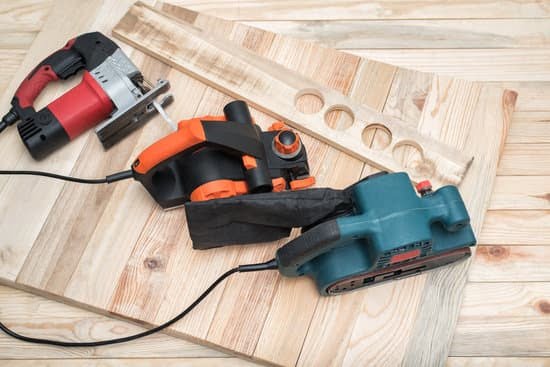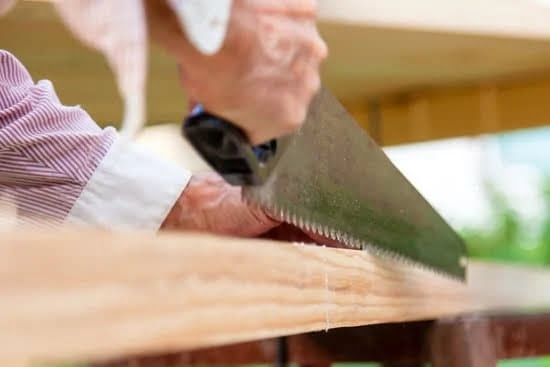Are you wondering which Sketchup to download for woodworking? Sketchup is a popular 3D modeling software that is widely used by woodworkers for designing and visualizing their projects. Whether you are a beginner or an experienced woodworker, having the right version of Sketchup can make a significant difference in your woodworking experience.
In this article, we will explore the different versions of Sketchup available for download and compare Sketchup Make vs Sketchup Pro specifically for woodworking purposes. We will also delve into the key features and tools in Sketchup that are essential for woodworking projects, as well as provide tips and tricks for using Sketchup effectively in your designs. Additionally, we will discuss how to choose the right Sketchup version based on your specific woodworking needs.
Whether you are looking to create intricate furniture designs or elaborate carpentry plans, understanding the capabilities of each Sketchup version is crucial in optimizing your woodworking endeavors. So let’s dive into the world of Sketchup for woodworking and find out which version is best suited for your creative pursuits.
Understanding the Different Versions of Sketchup Available for Download
Sketchup is a versatile and popular 3D modeling software that is widely used by woodworkers for designing and visualizing their projects. When looking to download Sketchup for woodworking, it is important to understand the different versions available and which one would best suit your needs. There are primarily two versions of Sketchup available for download: Sketchup Make and Sketchup Pro.
Sketchup Make is the free version of the software, offering essential tools for creating 3D models, including those for woodworking projects. It is a great option for beginners or hobbyists who are looking to explore 3D modeling without investing in a paid version. On the other hand, Sketchup Pro is the paid version that comes with additional features and functionalities, making it suitable for professional woodworkers or those who require advanced tools for their projects.
In terms of woodworking purposes, both versions of Sketchup have their own advantages. Sketchup Make may be sufficient for basic woodworking designs and planning, while Sketchup Pro offers more sophisticated features such as importing and exporting CAD files, creating dynamic components, generating reports, and using layout tools which can be particularly useful in professional woodworking settings. When deciding which version of Sketchup to download for woodworking, it ultimately depends on the specific needs and complexity of your projects.
Sketchup Make vs Sketchup Pro
Sketchup Make and Sketchup Pro are two versions of the popular software that are available for woodworking projects. Here’s a breakdown of the key differences between these two versions:
1. Cost: Sketchup Make is available for free, which makes it a great option for beginners or hobbyists who want to dabble in woodworking design without investing in expensive software. On the other hand, Sketchup Pro comes with a price tag, but it also offers more advanced features and tools that might be essential for professional woodworking projects.
2. Features: While both versions of Sketchup offer basic 3D modeling tools, Sketchup Pro includes more advanced features such as import/export options, solid modeling tools, and presentation tools which may be beneficial for those working on complex woodworking designs.
3. Licensing: Another important factor to consider when choosing between Sketchup Make and Sketchup Pro is the licensing agreement. While Sketchup Make is free for personal use, it has limited rights for commercial use. In contrast, Sketchup Pro offers a commercial-use license and additional technical support.
When deciding which version of Sketchup to download for woodworking purposes, consider your skill level, budget, and the complexity of your woodworking projects. For beginners or hobbyists, Sketchup Make may provide enough functionality to get started with basic woodworking designs. However, if you’re a professional woodworker or looking to tackle more complex projects, investing in Sketchup Pro might be worth it for the additional features and support.
Key Features and Tools in Sketchup for Woodworking Projects
Sketchup is a powerful tool for woodworking projects, offering a wide range of features and tools that can help woodworkers design and plan their projects with precision. One of the key features of Sketchup is its 3D modeling capabilities, which allow users to create detailed and realistic designs of their woodworking projects.
This can be incredibly useful for visualizing how different pieces will fit together, as well as for making adjustments to the design before any cutting or assembly takes place.
In addition to its 3D modeling capabilities, Sketchup also offers a variety of tools specifically designed for woodworking projects. These tools include functions for creating precise measurements, generating cut lists, and simulating how different materials will interact with one another. For example, woodworkers can use Sketchup to determine the amount of lumber needed for a specific project, as well as to visualize how different types of joinery will impact the overall design.
Furthermore, Sketchup also offers an extensive library of pre-made components and textures that can be used in woodworking projects. This includes everything from common woodworking tools and hardware to various types of wood grain patterns and textures. By utilizing these pre-made components and textures, woodworkers can save time on creating custom elements for their designs while still achieving a high level of detail and realism.
| Key Features | Tools |
|---|---|
| 3D modeling capabilities | Precise measurements |
| Cut lists generation | Material interaction simulation |
| Extensive library of pre-made components & textures |
How to Choose the Right Sketchup Version for Your Woodworking Needs
When it comes to choosing the right version of Sketchup for your woodworking needs, there are a few factors to consider. The two main options available for download are Sketchup Make and Sketchup Pro. Each version has its own set of features and limitations, so it’s important to understand which one will best suit your woodworking projects.
Understanding Your Woodworking Requirements
Before deciding on which version of Sketchup to download for woodworking, it’s essential to assess your specific requirements. Consider the scale and complexity of your woodworking projects, as well as the level of detail and precision needed for your designs.
If you are a professional woodworker or require advanced tools and features, Sketchup Pro may be the better option. However, if you are a hobbyist or just starting out with woodworking designs, Sketchup Make could still be a suitable choice.
Evaluating the Features and Tools
Sketchup Pro offers a wide range of advanced features and tools that cater to professional woodworkers, including solid tools for creating complex 3D models, layout functionality for creating construction documents, as well as advanced import and export options. On the other hand, Sketchup Make provides basic 3D modeling tools which can still be useful for simple woodworking projects. Consider what specific tools you will need for your woodworking designs to determine which version is most suitable for your needs.
With these considerations in mind, you can make an informed decision about which version of Sketchup is best suited for your woodworking needs. Whether you opt for Sketchup Make or Sketchup Pro will depend on the scale and complexity of your projects, as well as the level of precision and advanced features required. By choosing the right version of Sketchup, you can enhance your woodworking designs and bring your projects to life with greater ease and efficiency.
Tips and Tricks for Using Sketchup for Woodworking Designs
Utilizing Layers and Components
One of the most important tips for using Sketchup for woodworking designs is to make use of layers and components. By organizing your design into different layers, you can easily toggle the visibility of certain elements, making it easier to focus on specific parts of your woodworking project. Additionally, creating components for repetitive elements such as chairs or tables allows you to easily duplicate and modify these elements without having to redraw them from scratch.
Keyboard Shortcuts and Plugins
To maximize your efficiency when using Sketchup for woodworking, take advantage of keyboard shortcuts and plugins. Learning and utilizing keyboard shortcuts can significantly speed up your workflow by allowing you to perform various commands with a simple keystroke. Furthermore, exploring and installing woodworking-specific plugins can provide you with additional tools and functionalities tailored to your specific needs as a woodworker.
Practice and Experimentation
Like any new software or tool, becoming proficient in using Sketchup for woodworking requires practice and experimentation. Take the time to familiarize yourself with the various features and tools available in Sketchup, and don’t be afraid to experiment with different techniques and approaches. Through regular practice, you’ll gradually become more comfortable with the software which will ultimately enhance your ability to create detailed and impressive woodworking designs.
By following these tips and tricks, woodworkers can effectively harness the power of Sketchup for their design needs, whether it’s creating intricate furniture pieces or planning out entire woodworking projects.
Case Studies
Woodworkers around the world have found Sketchup to be an indispensable tool for their design and planning needs. With its user-friendly interface and powerful features, this software has been a game-changer for many in the woodworking community. Here are some case studies that showcase the successful use of Sketchup in woodworking projects:
- Custom Furniture Design: John, a skilled woodworker, used Sketchup to design a custom dining table for a client. With the help of the software’s precise measurement tools and 3D rendering capabilities, he was able to create a detailed model that perfectly captured the client’s vision. The ability to generate accurate cut lists and material estimates directly from the model also saved him time and reduced waste during construction.
- Cabinetry Planning: Sarah, an amateur woodworker, used Sketchup to plan out her kitchen cabinetry project. By utilizing the software’s extensive library of pre-made components and dynamic components feature, she was able to quickly experiment with different layout options and visualize how each design would look in her space. This allowed her to make informed decisions before making any cuts or purchases.
- Outdoor Structure Construction: Mike, a professional carpenter, employed Sketchup to plan the construction of a pergola for a residential job. He found that using the software’s drawing tools and layers feature enabled him to create detailed plans with ease. The ability to easily collaborate with his team by sharing the model also streamlined communication throughout the project.
These case studies demonstrate just how versatile Sketchup can be for woodworking projects – from intricate furniture designs to large-scale construction plans.
Overall, these examples highlight how different woodworkers have leveraged Sketchup’s features tailored specifically toward woodworking: designing intricate joinery details, creating accurate cut lists and material estimates directly from models and more.
Conclusion
In conclusion, when it comes to choosing the best Sketchup version for woodworking, it is important to carefully consider your specific needs and requirements. Both Sketchup Make and Sketchup Pro offer unique features and tools that can be beneficial for woodworking projects. While Sketchup Make may be suitable for hobbyists and beginners due to its free availability, Sketchup Pro offers advanced capabilities that professionals may find indispensable.
One key factor to consider when choosing the right Sketchup version for woodworking is the availability of essential woodworking tools and features. From creating detailed 3D models of furniture pieces to generating accurate measurements and cut lists, having access to these functionalities can greatly enhance the woodworking design process. It’s also important to note that while Sketchup Make is free, it has limitations compared to the comprehensive tools available in Sketchup Pro.
Ultimately, selecting the best Sketchup version for woodworking will depend on your level of expertise, budget, and the complexity of your woodworking projects. Whether you’re a novice woodworker or a seasoned professional, taking the time to evaluate the differences between Sketchup Make and Sketchup Pro can help you make an informed decision that aligns with your specific woodworking needs.
Frequently Asked Questions
Can You Use SketchUp for Woodworking?
Yes, SketchUp can be used for woodworking. It is a versatile 3D modeling program that allows woodworkers to design and visualize their projects before actually building them.
Which Is Better for Woodworking Fusion 360 or SketchUp?
When it comes to deciding between Fusion 360 and SketchUp for woodworking, it ultimately depends on the specific needs and preferences of the woodworker. Fusion 360 is known for its comprehensive features and functionality, particularly in terms of parametric modeling and engineering design.
On the other hand, SketchUp is highly user-friendly and intuitive, making it a popular choice for many woodworkers.
What Is the Woodworking Plugin for SketchUp?
There are several woodworking plugins available for SketchUp, including “CutList” and “SketchThis Kitchen Design.” These plugins offer additional tools and features specifically designed to enhance the woodworking capabilities of SketchUp, such as generating cut lists and creating detailed kitchen designs.

Hi everyone! I’m a woodworker and blogger, and this is my woodworking blog. In my blog, I share tips and tricks for woodworkers of all skill levels, as well as project ideas that you can try yourself.





